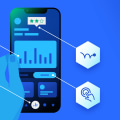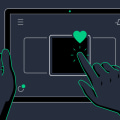In today's fast-paced business world, efficiency and accuracy are key to success. For enterprises dealing with complex workflows and data visualization, having a well-designed user interface is crucial. In this article, we will take an in-depth look at the importance of designing for complex workflows and data visualization, and explore how successful UI designs have helped enterprises improve their processes and achieve their goals. Whether you are a UI designer, developer, or someone interested in enterprise software, this comprehensive overview will provide valuable insights and case studies that will help you understand the nuances of designing for complex workflows and data visualization.
So, let's dive in and discover the power of a well-crafted UI design. In today's digital landscape, user interface design plays a crucial role in the success of any website or mobile app. As more and more businesses rely on enterprise software to streamline their workflows and visualize complex data, it is essential to understand the best practices for designing an intuitive and visually appealing UI. This article will provide a comprehensive overview of designing for complex workflows and data visualization, with a focus on the needs of enterprise software users.User-centered design is a key aspect of creating a successful UI. This approach puts the needs and preferences of the end user at the forefront of the design process.
It involves conducting thorough research, creating prototypes, and conducting user testing to ensure that the final design meets the needs and expectations of the target audience. Successful examples of user-centered design in enterprise software include intuitive navigation menus, well-organized layouts, and customizable features that cater to individual user preferences. Another important aspect of UI design is responsiveness. In today's digital landscape, users access websites and apps from a variety of devices, including smartphones, tablets, and laptops. Responsive design ensures that the user experience remains consistent and seamless across all devices by adapting to different screen sizes and orientations.
This is particularly important for enterprise software users who may need to access their workflows and data on multiple devices throughout their workday. The latest trends in UI and UX design also play a significant role in creating an effective interface for complex workflows and data visualization. For example, minimalism focuses on simplicity and decluttering the interface to make it more user-friendly. Flat design uses clean lines and bright colors to create a modern and visually appealing look. Microinteractions add subtle but meaningful interactions between the user and the interface, making it more engaging. To help readers further, this article provides a list of resources and tools for UI design.
Wireframing and prototyping software can help designers create mockups and test different design ideas before finalizing the interface. Color palette generators can assist in choosing a visually appealing and cohesive color scheme for the UI. Icon libraries offer a wide selection of icons that can be used to convey information and improve the overall visual appeal of the interface. In conclusion, designing for complex workflows and data visualization is a crucial aspect of creating successful enterprise software. By following user-centered design principles, incorporating responsive design, and staying up-to-date with the latest trends, designers can create intuitive and visually appealing UIs that meet the needs of enterprise software users.
With the help of resources and tools, designers can implement these best practices and create a seamless user experience.
Resources and Tools for UI Design
use HTML structure with Designing for complex workflows and data visualization only for main keywords and In order to create an effective user interface design for enterprise software, there are several practical tools that can be utilized. These tools not only help designers in implementing their ideas, but also aid in creating visually appealing and user-friendly designs. One such tool is Adobe XD, which allows for easy prototyping and wireframing of complex workflows and data visualization elements. Another useful tool is Figma, which offers collaboration features and real-time feedback for designing and testing user interfaces.Additionally, Sketch offers a wide range of plugins and templates specifically designed for enterprise software design. Finally, InVision allows for creating interactive prototypes to test the functionality and usability of the UI design before implementation. Apart from these tools, it is also important to have a thorough understanding of design principles and guidelines for enterprise software. This includes knowledge of data visualization techniques, color theory, typography, and information architecture. By utilizing these resources and tools, designers can effectively implement UI design that caters to the needs of enterprise software users.
Responsive Design for Enterprise Software
use HTML structure with responsive design only for main keywords and Enterprise software users are increasingly relying on mobile devices to access their workflows and data visualizations.This means that as a designer, it is crucial to create a seamless experience across devices. One of the key techniques for achieving this is through responsive design, which allows the UI to adapt and adjust to different screen sizes and orientations. This ensures that users can access and interact with the software in a consistent and user-friendly manner, regardless of the device they are using. There are several tips and techniques for creating a responsive design for enterprise software.
One important aspect is to prioritize the most important elements and features of the software, and ensure they are easily accessible on all devices. This may involve rearranging the layout or using different design elements for smaller screens. Additionally, utilizing flexible grids and images can help maintain the visual integrity of the UI while still allowing for adaptability. It is also important to consider touch-friendly interactions and gestures for mobile devices, as well as incorporating features like pinch-to-zoom for data visualization.
In conclusion, responsive design is essential for creating a seamless experience across devices for enterprise software users. By implementing these tips and techniques, designers can ensure that their UI is user-friendly and visually appealing, no matter what device their audience is using.
The Role of User-Centered Design
In order to design an effective user interface for complex workflows and data visualization, it is crucial to adopt a user-centered approach. This means putting the needs and preferences of the end user at the center of the design process. By understanding their goals, pain points, and behaviors, designers can create a UI that is intuitive, efficient, and visually appealing. One of the key aspects of user-centered design is conducting thorough research and analysis. This includes gathering feedback from potential users, studying their workflows, and identifying any pain points or areas for improvement. Another important element is involving users in the design process through usability testing and prototyping.This allows designers to gather feedback and make necessary adjustments before finalizing the UI. By prioritizing the needs of the end user, a user-centered approach ensures that the final UI will meet their expectations and effectively support their complex workflows and data visualization needs.
The Latest Trends in UI and UX Design
When it comes to designing for complex workflows and data visualization, keeping up with the latest trends in UI and UX design is crucial. As technology evolves and user expectations continue to rise, it is important for designers to constantly adapt and innovate their approach to UI design. One of the most prominent trends in UI and UX design today is the use of minimalism. This approach focuses on simplicity and clean design, which can greatly enhance complex workflows by reducing clutter and improving the user's ability to navigate through a system. Another trend that has gained popularity in recent years is the use of microinteractions. These small animations or visual responses to user actions can make a big impact on the overall user experience, especially when it comes to data visualization.By incorporating subtle microinteractions, designers can make complex data more engaging and easier to understand for users. In addition, designers are also turning to more immersive and interactive elements in their UI designs. This includes features such as virtual reality, augmented reality, and 3D graphics. These elements not only add a wow factor to the design, but they also provide a more intuitive and engaging way for users to interact with complex data. Ultimately, by staying informed and implementing the latest trends in UI and UX design, designers can greatly enhance complex workflows and data visualization. It is important for enterprise software designers to constantly experiment and push the boundaries of traditional UI design in order to create the most efficient, intuitive, and visually appealing experiences for users. In conclusion, designing for complex workflows and data visualization requires a balance of usability and visual appeal.
By following a user-centered approach, incorporating responsive design, staying up-to-date on design trends, and utilizing helpful resources and tools, designers can create successful UIs for enterprise software. Remember to always consider the needs of the end-user and continuously seek feedback to improve the design.


